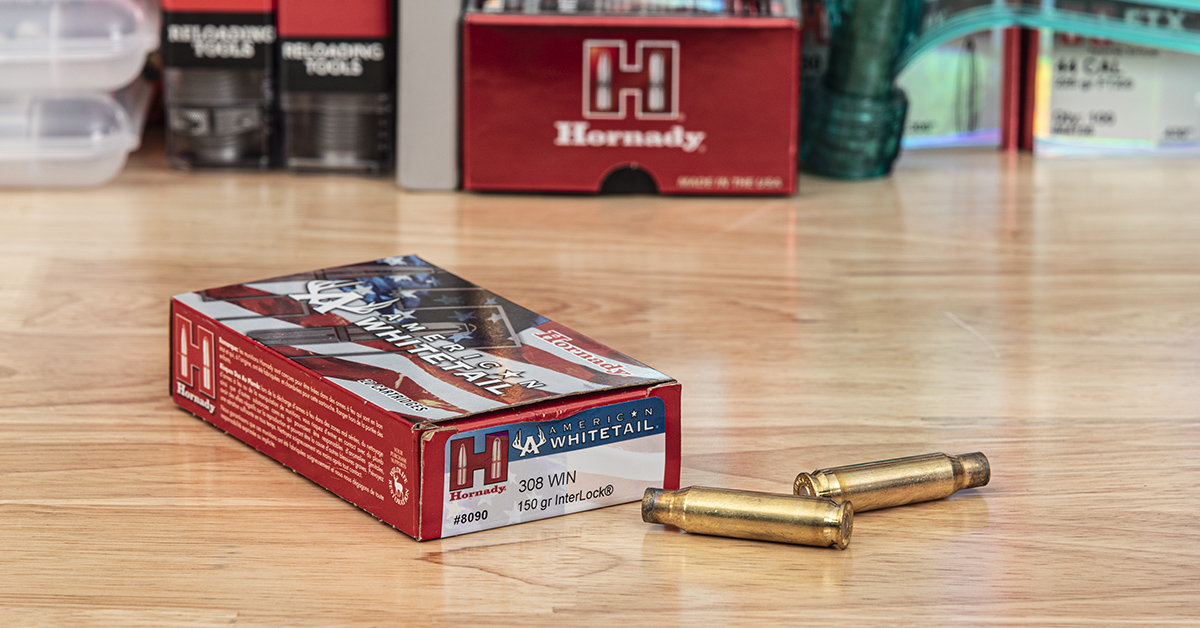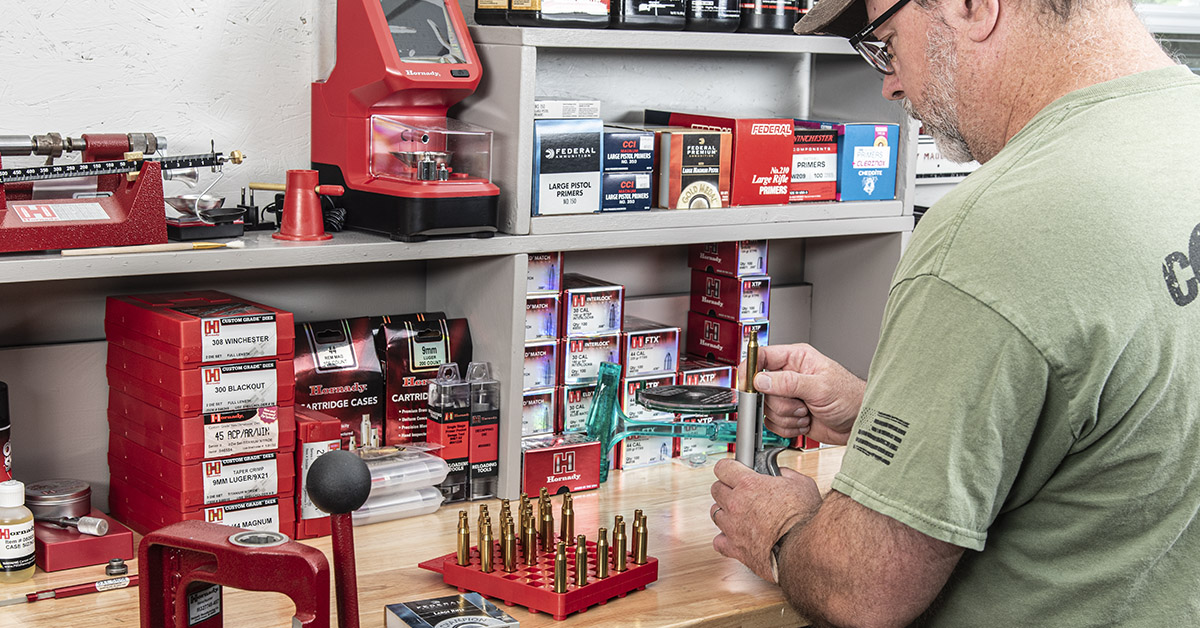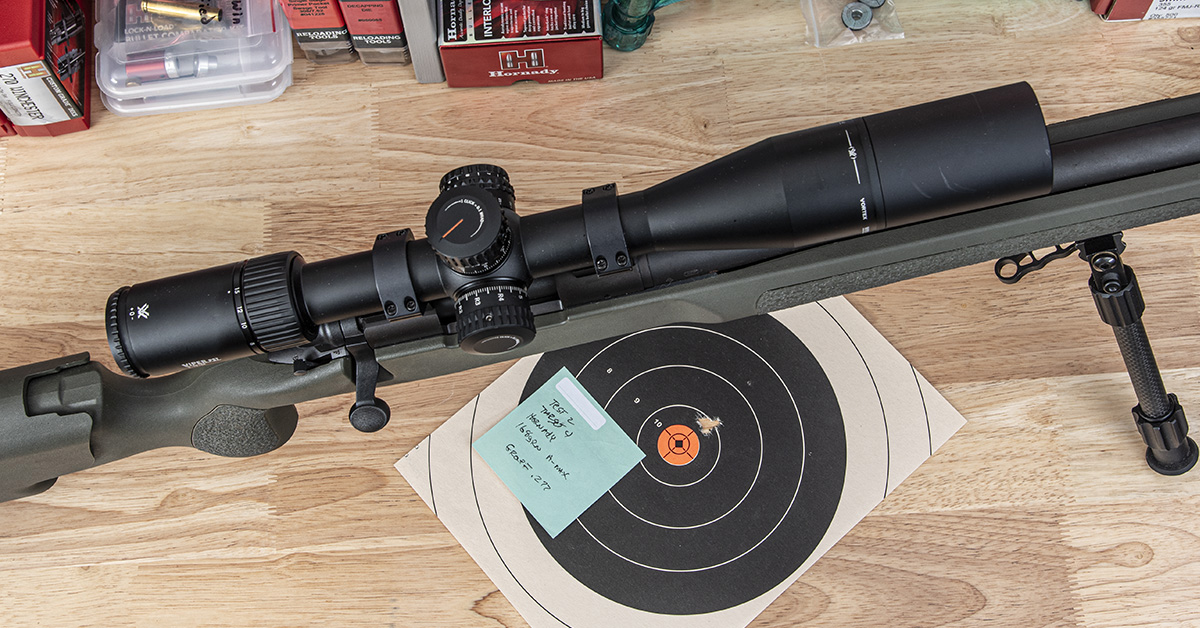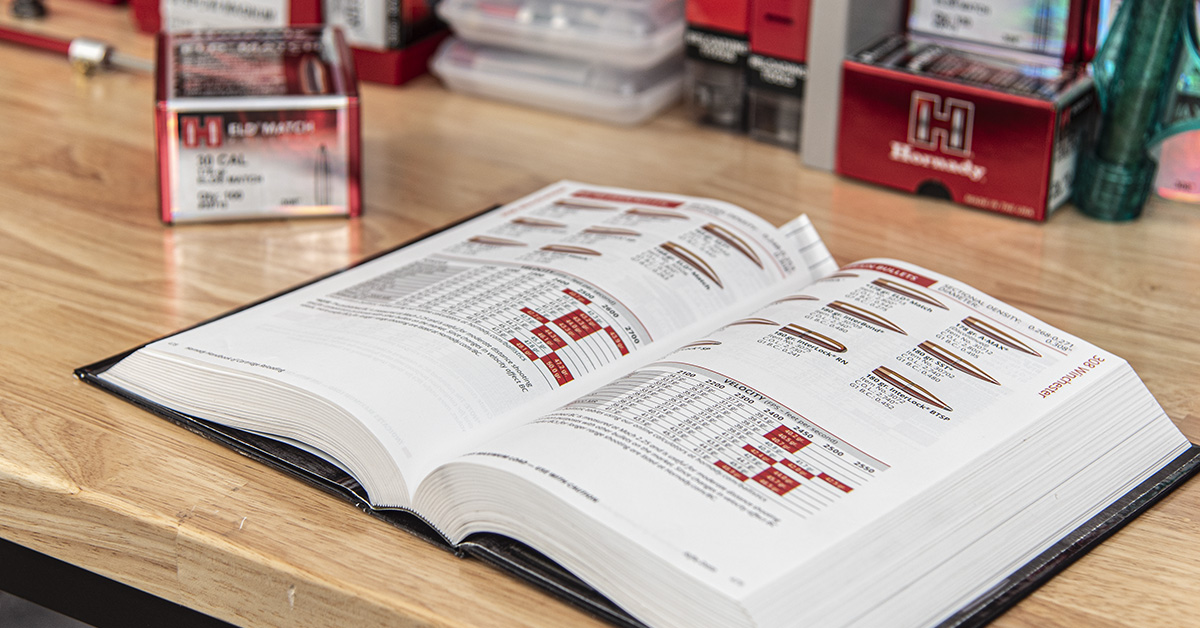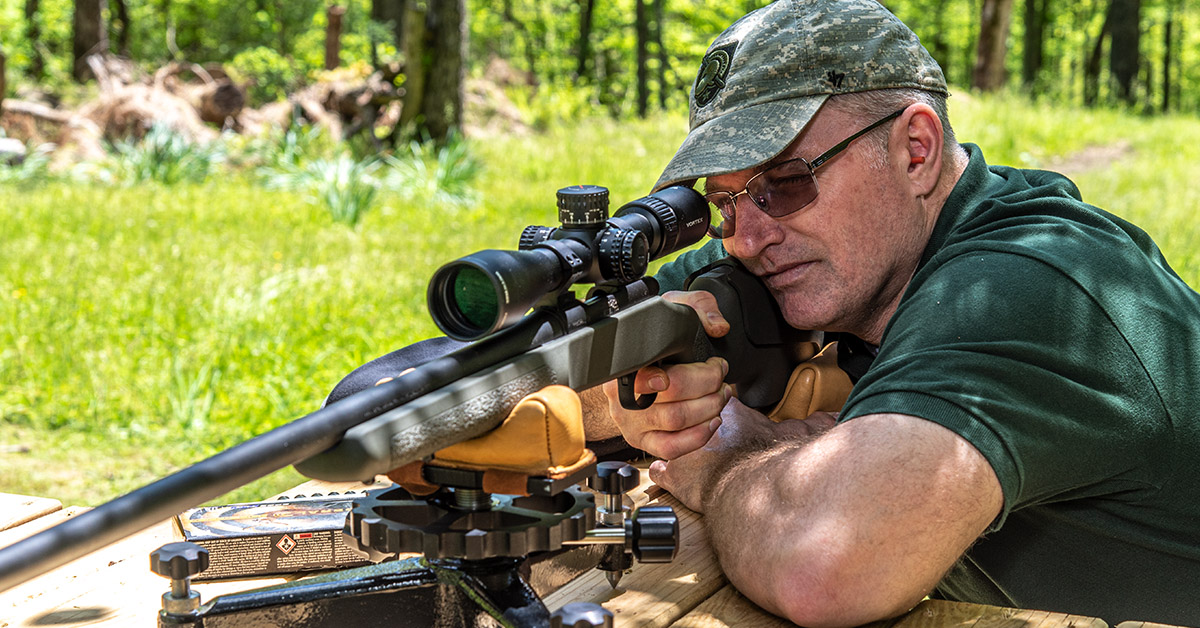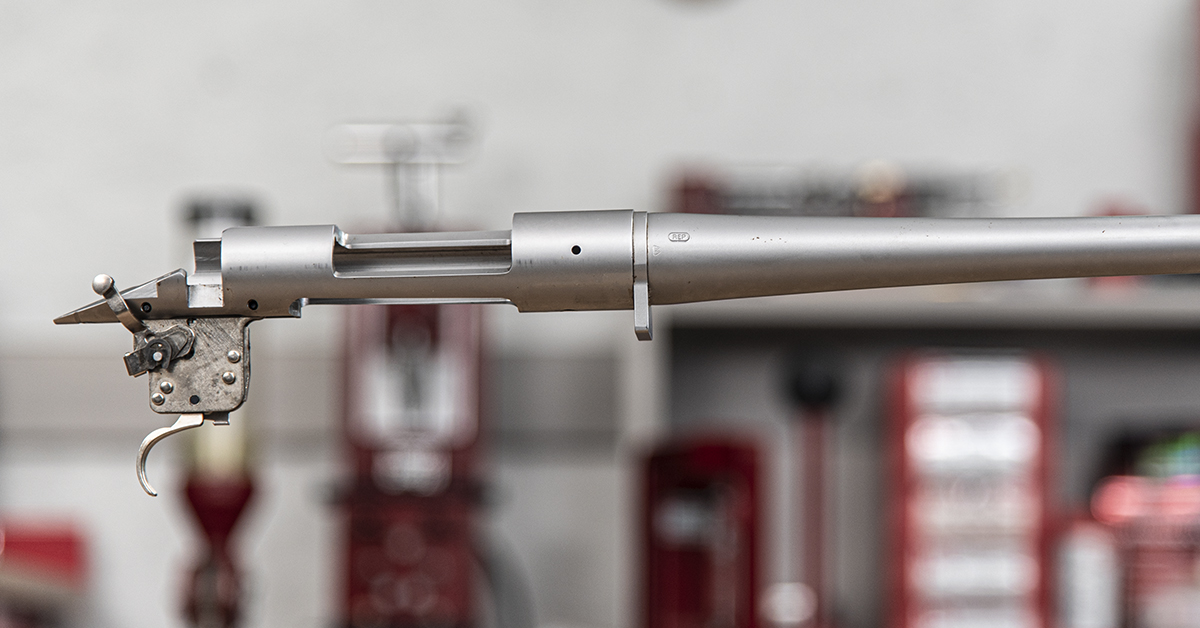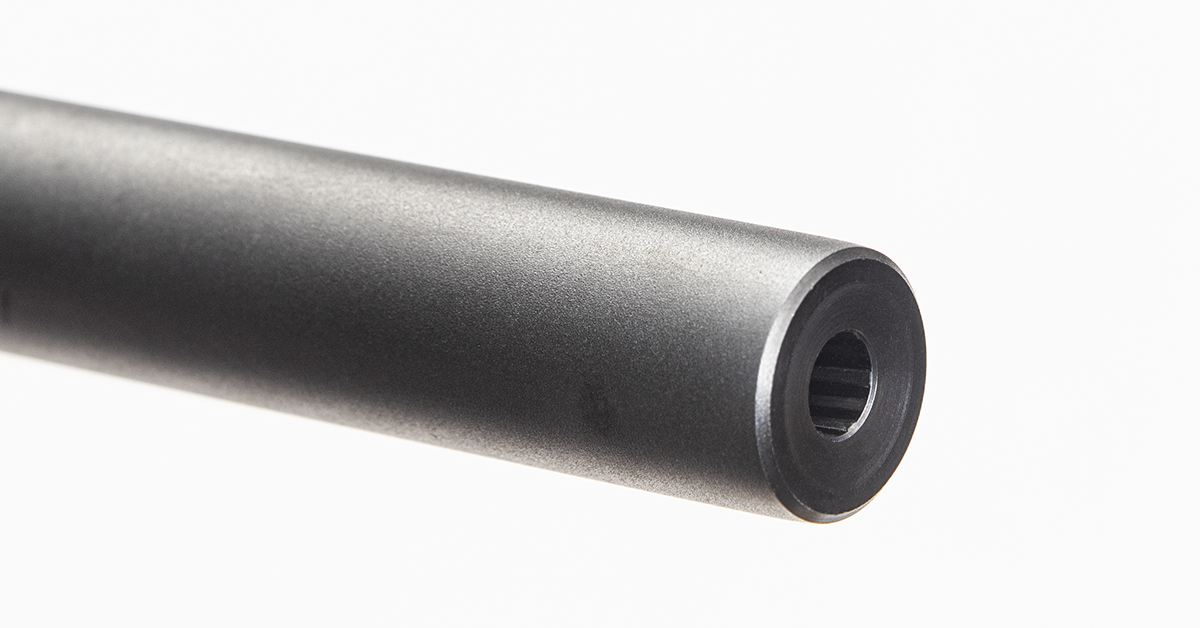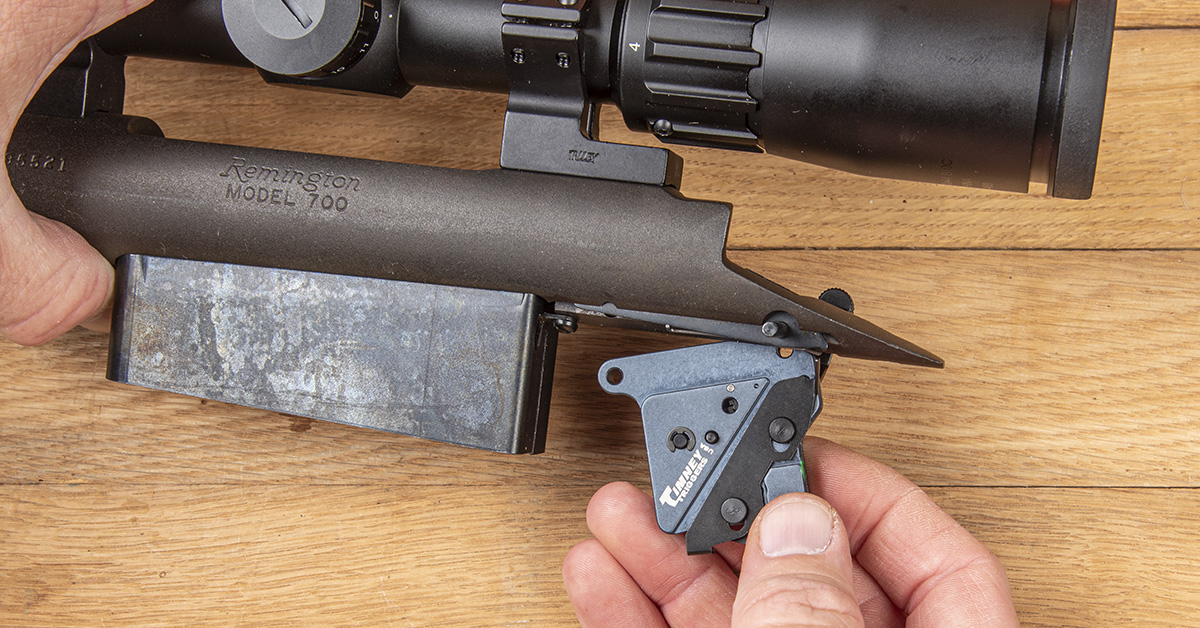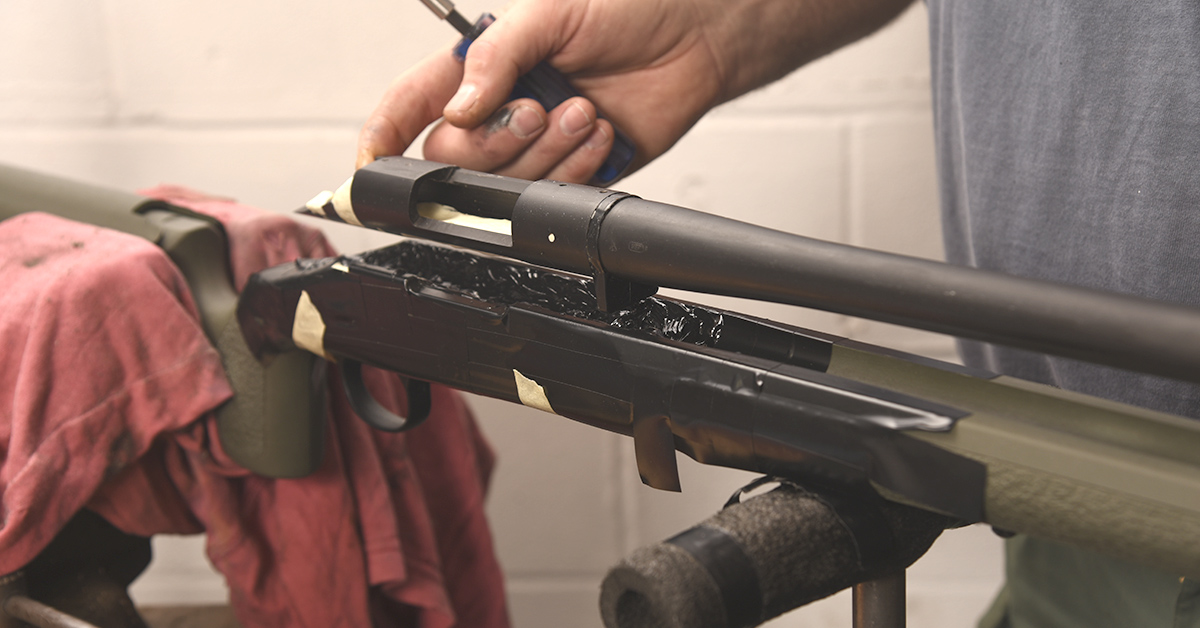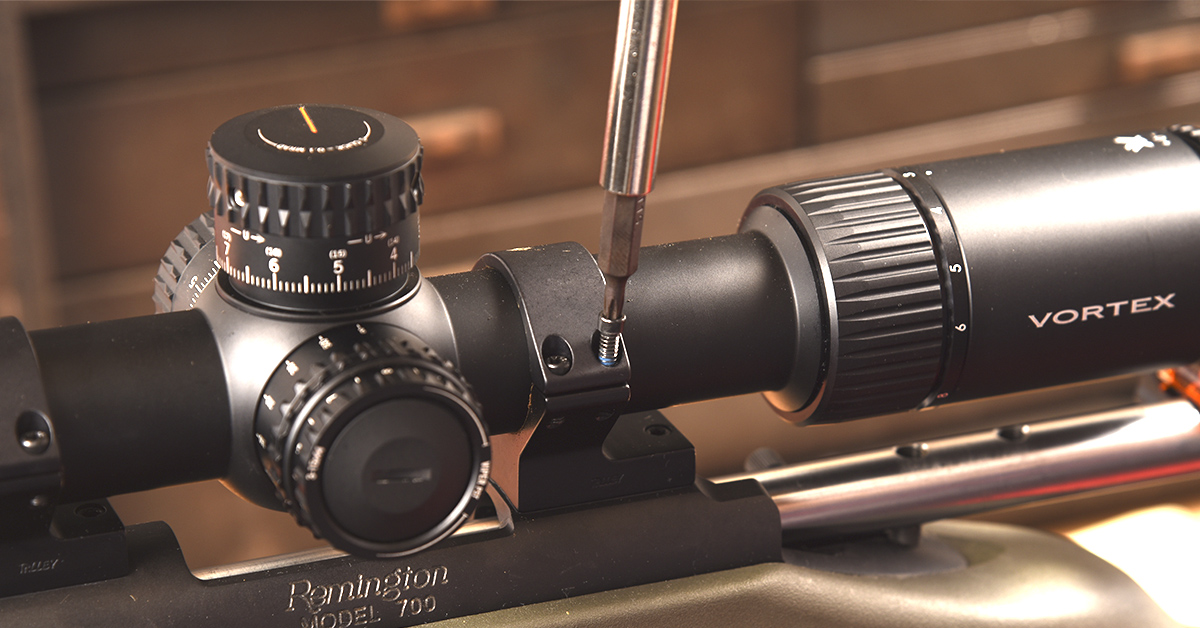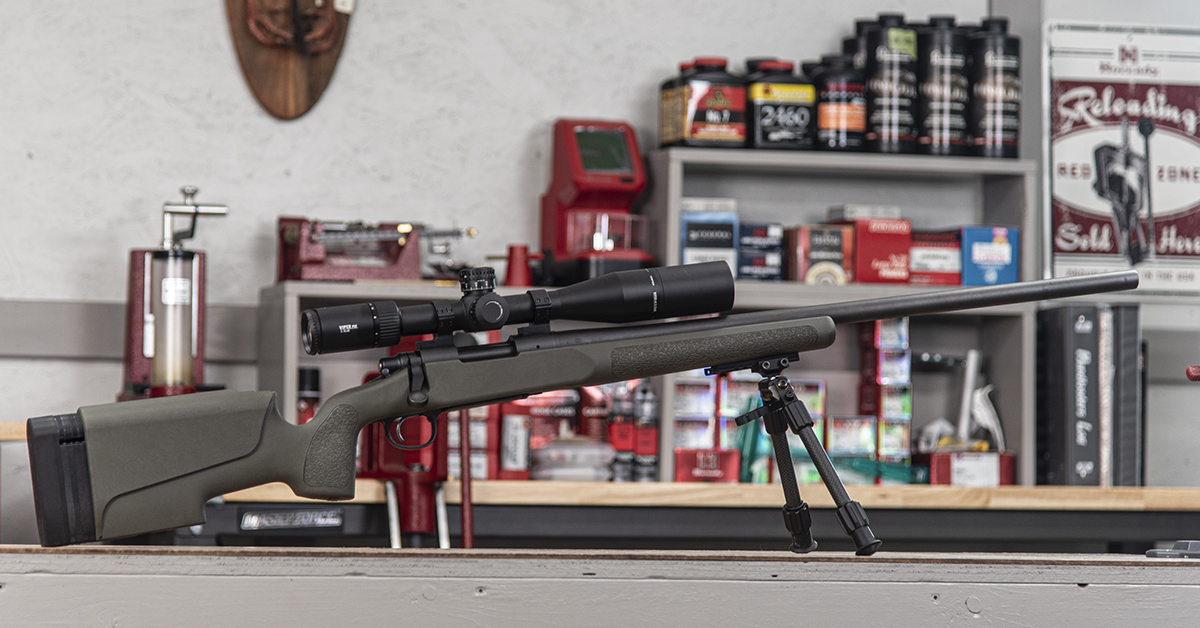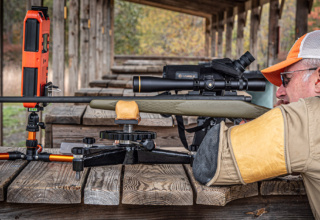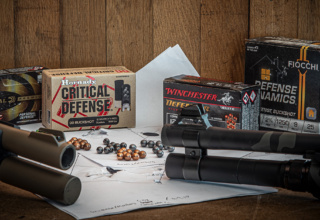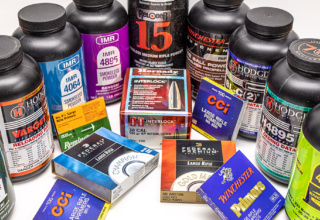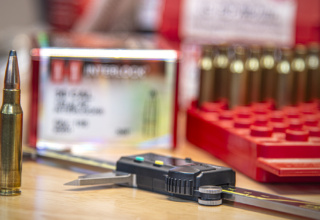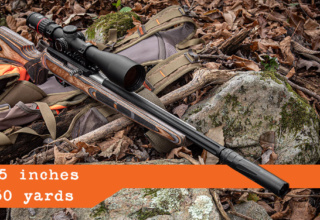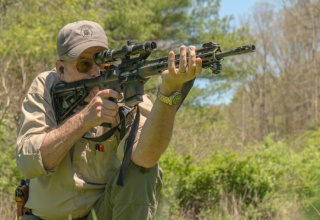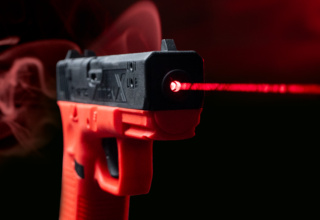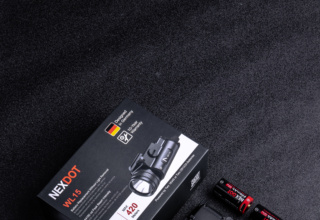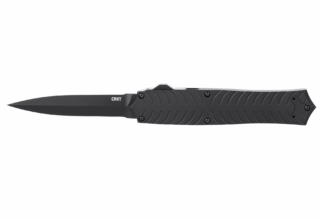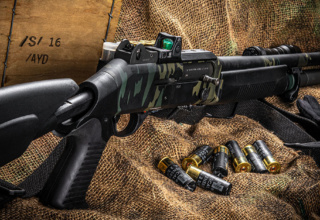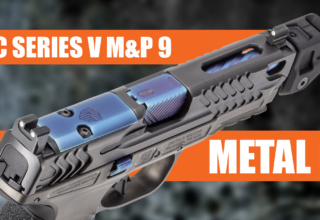Knowing where to start in the reloading learning curve is the biggest hurdle to overcome for most first-time reloaders. But “Where to begin?” is not where you think it is.
by Lou Patrick
“Where to begin?”
It is a common question for anyone who is thinking about getting into reloading, and rightly so. The beginning reloader is faced with a seemingly endless and often mysterious array of tools and supplies from which to choose. Some of these tools are “must haves” while others are simply designed to help speed up the reloading process and thus aren’t absolutely necessary to reload a cartridge.
Regarding tools, the truth is that few are required to reload a safe and accurate cartridge.
Not only is the rookie reloader faced with trying to figure out what are the needed essentials, he or she is also faced with learning the reloading process, and this tends to add more confusion to the learning curve.
The good news is that reloading only seems to the novice to be more complicated than it is. It is a process that is easy to learn and perfectly safe, provided you reload within established procedures. It’s also quite an enjoyable hobby and, done properly, will generally deliver greater accuracy on the range and in the field.
Another source of confusion for the beginning reloader can come from those more experienced in the field. Starting out, I could ask one question of three veteran reloaders and seemingly get four different answers.
This is partly due to the reloading process itself. There are certain steps that must be taken, and some taken in a particular order. Others can be performed as the reloader chooses and some operations, such as flash hole deburring, are completely optional.
So, it can be a little confusing. Just remember — it’s not difficult and the process is somewhat flexible, allowing you to develop your own routine that best suits your own needs.
Our purpose in this series of handloading articles is not to present an all-encompassing treatment on reloading. I’ll be drawing from years of customer interaction and using the most common questions and/or problems my gunsmithing customers have had over the years as a guide. This experience, combined with the reloading process that I have developed for my own use (which is by no means “The Way” to reload, but simply the way I go about things), is to offer guidance to those interested in starting their reloading hobby and, perhaps, pass on a few tidbits of information that will also be useful to the more seasoned reloader.
For those just starting out, you will probably find, as I did, that reloading — whether for hunting, competition, personal defense, or just a fun day on the range — brings even greater enjoyment and understanding to all firearms related activities. In fact, the greatest causal factor in the development of my firearms knowledge, which eventually led me to attend gunsmithing school and pursue a career in gunsmithing, was my early interest in reloading.
The “Where to begin?” question is, I feel, best defined by this question…
Why Reload?
You’ve no doubt heard many reasons for picking up the reloading hobby. There are usually four primary reasons given:
- Save money
- The cartridge you need is out of production
- Enjoyable hobby
- Improve accuracy
Everyone has their opinions, and while I don’t disagree with any of these reasons, I do believe there is more to the story or, perhaps, it is a little less. I believe there is truly only one reason to reload, and that is to improve accuracy. That’s it. Just one reason.
Let me explain by taking a deeper look at the aforementioned reasons.
1) Save money.
A modern metallic cartridge is made up of four major components: powder, primer, bullet, and the cartridge case. Each time you fire a round, the ejected cartridge case represents the most expensive component of the four, and it is reusable. Why waste it?
Here is a breakdown of a .308 Winchester hunting load at a cost-per-round:
- Cartridge case: $0.86
- Powder: $0.44
- Bullet: $0.32
- Primer: $0.11
- Total: $1.73
Using prices from Midway USA, a box of Hornady American Whitetail ammunition for a .308 Winchester with a 150-grain Hornady Interlock bullet costs $1.55 per round. This same load can easily be duplicated by the reloader using the same Hornady bullet and new brass for $1.73 per round. A subsequent loading of the brass, though, eliminates the cost of the brass, which drops the price to .87 cents per round.
So, yes, you can save money by reloading. Factor in the cost of your reloading equipment and it will take some time to realize the savings, but it is there.
I stated earlier that I believe accuracy is the key reason to reload. Why? If your reloads aren’t accurate, are you satisfied with having only saved money?
2) Cartridge your firearm uses is out of production.
If you have a rifle chambered for an obsolete cartridge, such as the .219 Zipper, and you wish to keep shooting it, your only choice is to reload. In this example, while it may certainly feel good to get the old Zipper shooting again, will you be happy if the loads are inaccurate?
3) Reloading is an enjoyable hobby.
Over the past 30 years or so, I have certainly found reloading to be an enjoyable endeavor. Perhaps most importantly, I have found it to be educational and have learned through reloading far more about my firearms and ammunition than I ever thought possible.
Yet if we are honest with ourselves, that enjoyment is conditional on the performance of the ammunition we develop. That enjoyment can quickly turn to frustration and a sense of failure if our reloads are not accurate.
Reason 4) Improved accuracy.
Your reloaded ammunition can be tailor-made to your rifle. When done properly, this will most likely result in smaller groups on target. It is my opinion that the foremost and truly the only reason we reload is for the improvement in accuracy. The enjoyment and the reduced cost of ammunition combined with the ability to produce obsolete ammunition needed to get an old but otherwise good rifle back in the field, are truly only realized and appreciated if our reloads are accurate. It is for this reason that my advice to those beginning reloading is to focus on accuracy. It is also why my advice to the new reloader does not begin with the reloading process at all, but with the shooter and the rifle.
Where to Begin
Speaking of the broader topic of rifle accuracy, in my opinion, accuracy, or lack thereof, will be dependent upon three things that must work in unison in order to produce the desired results on target. Those are the shooter, the firearm, and the ammunition.
The shooter, for our purposes, is also the reloader. The rifle, for our purposes, is a typical off-the-shelf bolt-action hunting rifle. The ammunition will eventually be prepared by the shooter/reloader.
Before you start buying reloading equipment and firing up the press, it is my advice to curb the excitement of ammunition production and focus on the first two items listed above. Remember, the ultimate success of your reloads rests on accuracy. Often enough, factory rifles need a little attention in order to deliver their full accuracy potential.
Since the beginning reloader is also behind on the reloading learning curve, this is a good time to study and learn about reloading. Learn as much as you can before buying any equipment while simultaneously getting your rifle and shooting gear in order.
Once reloading begins, the first thing you are going to want to see from your reloads is that they went bang and that your rifle is still in one piece. Yes, we are all a little apprehensive when firing our first reload. Once that hurdle is crossed, the next concern will be accuracy. It is far better to take care of your rifle and shooting equipment prior to firing any of your reloads. If you don’t do it now, you’ll regret it later.
A common mistake that I have seen many reloaders make is not reading the reloading manual. It seems that many people just go straight to the reloading data section and start loading ammunition. This is a big mistake. The Hornady 11th Edition Handbook of Cartridge Reloading is a good resource to start learning about reloading, Study the first 100 pages and then look through the bullet guide. This will direct you in selecting the proper bullet to use in your first reloads.
Also, familiarize yourself with the charts and conversion tables (page 971) and the glossary of terms (page 983). Take your time and ensure that you understand the information presented. Do this as you get your shooting equipment and rifle in order.
When testing the accuracy of your rifle and reloaded ammunition, you will need to be shooting from a sturdy shooting bench. Shooting from the bench rest also involves proper technique and shooting equipment. More information can be found here. Using the proper equipment and technique will ensure that you are doing your part as the shooter to constantly shoot small groups. This will eliminate as much human error as possible and allow you to accurately analyze the accuracy of your reloads.
There are several general areas of concern when it comes to the performance of your rifle:
- Barreled action
- Trigger
- Barrel length/rifling twist rate
- Stock bedding
- Barrel free-floating
- Scope mounting
Barreled Action
I recommend starting with a thorough cleaning of the bore using Kroil and JB bore paste. More information on this cleaning process can be found here. Once clean, the next concern is stress that is found within the barrel steel.
This stress commonly manifests itself with groups getting larger as the barrel heats up. Factory barrels, which most of us are shooting, are often button rifled or hammer forged. Stress is introduced into the barrel steel as part of these manufacturing processes. Relieving this stress can be a great benefit to accuracy.
The best, and perhaps the only, method of relieving the stress that is found within the barrel steel is to cryogenically freeze the barrel steel. Cryogenic treatment of the barrel steel consists of slowly bringing the barrel down to -300° F. Here, the barrel is held at this temperature for 24 hours and then slowly warmed back to room temperature.
This is a one-time, permanent process that effectively relieves the residual stress that was created within your rifle’s barrel during the manufacturing process. Not only can this process increase the accuracy of your rifle, but there are also several other benefits as well, which include increased wear resistance and reduced friction and heat.
Over the years I have had several barrels cryogenically treated, and I have always been satisfied with the service and results. Recently, I had a new Douglas barrel installed on my Remington 700 chambered in .308 Winchester. As soon as I received the barreled action from Douglas, I immediately shipped it to Nitrofreeze for treatment.
My experience with Nitrofreeze was as advertised. Within the stated timeframe, my barrel was treated and returned to me. Many people are unaware of this, but as the owner of the firearm, you can ship your firearm or barreled action to a licensed repair facility such as Nitrofreeze and they can ship it directly back to you. There is no need to get a gun shop involved in the process.
Hornady has an interesting podcast concerning rifle barrels that is well worth your time.
Triggers
Triggers don’t increase the accuracy of your rifle, but they do serve as an aid in helping you to shoot more accurately. Most likely, the factory trigger on your rifle could use a little attention. It has been my experience that most factory triggers have a somewhat long and heavy pull. Rather than trying to modify/adjust the factory trigger, the best results are usually obtained by swapping out the original trigger for an aftermarket trigger, such as those available from Timney Triggers. Check out our discussion on Timney’s Remington 700 triggers for a better understanding of the advantages of a Timney trigger and how to install one in your rifle.
Barrel Length/Twist Rate
You should also know the barrel length of your rifle and the twist rate of the rifling. Barrel length is the complete length of the barrel. This includes the threaded portion of the barrel that threads into the receiver. The threaded portion is usually about an inch long.
Barrel length is important as it is directly related to velocity. Longer barrels tend to shoot a little faster as compared to a shorter barrel. The rifling’s rate of twist will dictate the heaviest bullet that can be properly stabilized by that barrel. This will influence the weight of the bullet you select to reload. Go here to learn how to find the twist rate in a barrel and check out this Hornady podcast, Let’s Talk Twist Rate. Fascinating stuff!
Stock
The fitment of the barreled action to the stock is crucial to the rifle’s accuracy. In fact, this is so important that I will pillar-bed a new rifle prior to shooting it for the first time.
For dependable, repeatable accuracy, the barreled action must fit the stock properly, and nothing beats the skin-tight, form-fit of epoxy combined with the rigid support of aluminum pillars. Pillar bedding your rifle’s stock is not beyond the means of the savvy DIYer. Just work slowly and carefully and you can obtain desirable results.
Chassis systems and stocks with aluminum bedding blocks are not immune to proper bedding. To realize the utmost accuracy potential that these stocks have to offer, the receiver must make proper contact with the bedding block. More information can be found in our Long-Range Shooting Foundations article.
Free-Float Barrel
Slightly opening up the barrel channel and removing the factory barrel pressure point is commonly referred to as free-floating the barrel. This is done so that the barrel forward of the receiver does not contact the stock. The modification will normally enhance the accuracy of your rifle; however, lightweight sporter contour barrels that are usually found on hunting rifles may perform better with a support pad of epoxy about an inch back from the end of the forearm.
Nothing is cast in stone here, as it is based entirely on the need of that particular barrel. Some barrels shoot better free-floated while others may need a little support. More information can be found in our article 5 Steps to Accurizing Your Hunting Rifle. My experience has been that cryogenically treated factory barrels perform well when free-floated.
Scope Mounting
Scope mounting is the last step in getting your rifle squared away and ready to test-fire your first reloads. While scope mounting is not necessarily directly related to the accuracy of your rifle, it does have a direct impact on how your rifle and scope combination will function.
If the scope is not rigidly mounted to the receiver, it may shift under recoil, during transport on an ATV, or perhaps under the not-so-gentle touch of baggage handlers at the airport. Again, check out our Long-Range Shooting Foundations article for details.
The windage and elevation adjustments needed to zero the rifle operate on a horizontal and vertical plane. If the scope is mounted with the reticle canted, these adjustments are now somewhat skewed to an undesirable diagonal plane. A canted reticle also causes performance issues downrange. The greater the distance the greater the problem. More information concerning scope cant can be found here.
Like everything else, good rifle scopes don’t come cheap. To take full of advantage of the money spent and the performance offered by your scope, it must be mounted properly.
Yes, this first installment of our reloading series didn’t cover much about reloading. And that’s as it should be. It is my opinion that, next to safety, accuracy is the primary concern of the reloader. Details are important if maximum accuracy is the goal. Taking care of these details first will put you on the path to success and set you up for a much more enjoyable reloading experience.
Check out our the next installment where we introduce our two-part article on reloading tools and processes.

